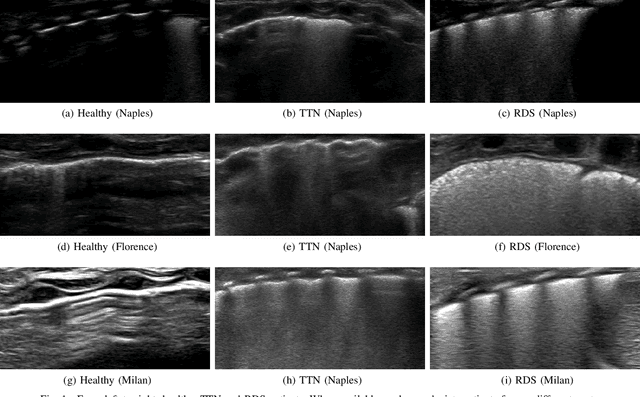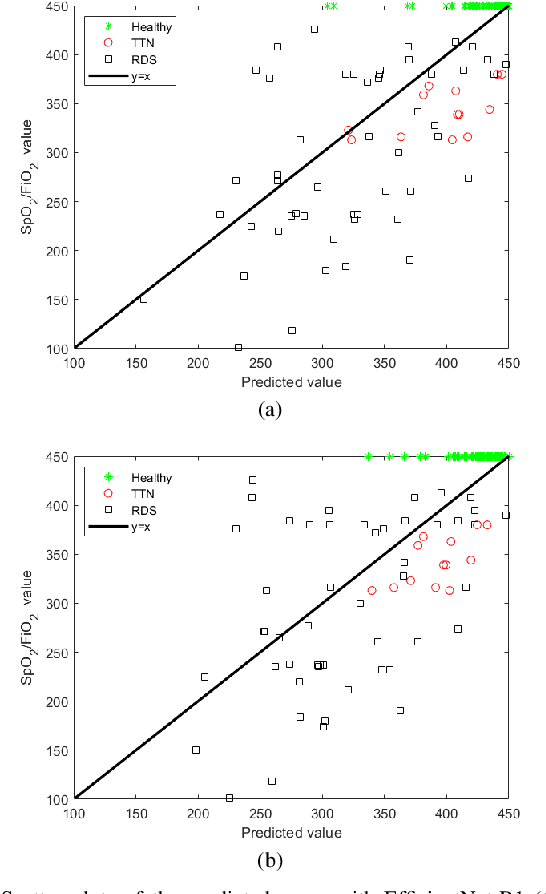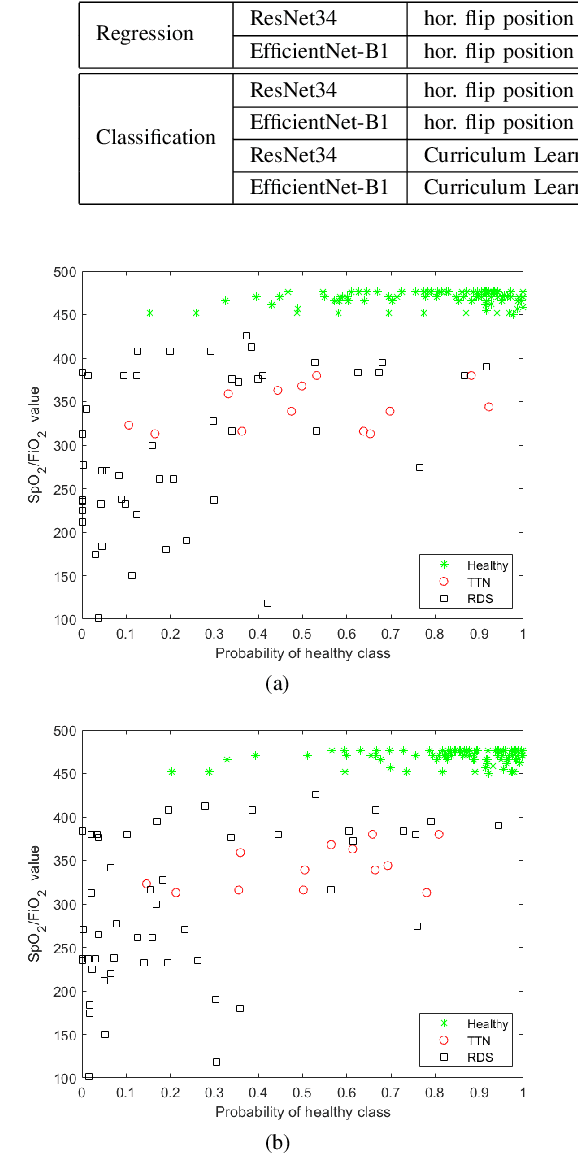Diego Gragnaniello
Towards Universal GAN Image Detection
Dec 23, 2021



Abstract:The ever higher quality and wide diffusion of fake images have spawn a quest for reliable forensic tools. Many GAN image detectors have been proposed, recently. In real world scenarios, however, most of them show limited robustness and generalization ability. Moreover, they often rely on side information not available at test time, that is, they are not universal. We investigate these problems and propose a new GAN image detector based on a limited sub-sampling architecture and a suitable contrastive learning paradigm. Experiments carried out in challenging conditions prove the proposed method to be a first step towards universal GAN image detection, ensuring also good robustness to common image impairments, and good generalization to unseen architectures.
Are GAN generated images easy to detect? A critical analysis of the state-of-the-art
Apr 06, 2021



Abstract:The advent of deep learning has brought a significant improvement in the quality of generated media. However, with the increased level of photorealism, synthetic media are becoming hardly distinguishable from real ones, raising serious concerns about the spread of fake or manipulated information over the Internet. In this context, it is important to develop automated tools to reliably and timely detect synthetic media. In this work, we analyze the state-of-the-art methods for the detection of synthetic images, highlighting the key ingredients of the most successful approaches, and comparing their performance over existing generative architectures. We will devote special attention to realistic and challenging scenarios, like media uploaded on social networks or generated by new and unseen architectures, analyzing the impact of suitable augmentation and training strategies on the detectors' generalization ability.
Deep learning in the ultrasound evaluation of neonatal respiratory status
Oct 31, 2020



Abstract:Lung ultrasound imaging is reaching growing interest from the scientific community. On one side, thanks to its harmlessness and high descriptive power, this kind of diagnostic imaging has been largely adopted in sensitive applications, like the diagnosis and follow-up of preterm newborns in neonatal intensive care units. On the other side, state-of-the-art image analysis and pattern recognition approaches have recently proven their ability to fully exploit the rich information contained in these data, making them attractive for the research community. In this work, we present a thorough analysis of recent deep learning networks and training strategies carried out on a vast and challenging multicenter dataset comprising 87 patients with different diseases and gestational ages. These approaches are employed to assess the lung respiratory status from ultrasound images and are evaluated against a reference marker. The conducted analysis sheds some light on this problem by showing the critical points that can mislead the training procedure and proposes some adaptations to the specific data and task. The achieved results sensibly outperform those obtained by a previous work, which is based on textural features, and narrow the gap with the visual score predicted by the human experts.
Combining PRNU and noiseprint for robust and efficient device source identification
Jan 17, 2020



Abstract:PRNU-based image processing is a key asset in digital multimedia forensics. It allows for reliable device identification and effective detection and localization of image forgeries, in very general conditions. However, performance impairs significantly in challenging conditions involving low quality and quantity of data. These include working on compressed and cropped images, or estimating the camera PRNU pattern based on only a few images. To boost the performance of PRNU-based analyses in such conditions we propose to leverage the image noiseprint, a recently proposed camera-model fingerprint that has proved effective for several forensic tasks. Numerical experiments on datasets widely used for source identification prove that the proposed method ensures a significant performance improvement in a wide range of challenging situations.
A Full-Image Full-Resolution End-to-End-Trainable CNN Framework for Image Forgery Detection
Sep 15, 2019



Abstract:Due to limited computational and memory resources, current deep learning models accept only rather small images in input, calling for preliminary image resizing. This is not a problem for high-level vision problems, where discriminative features are barely affected by resizing. On the contrary, in image forensics, resizing tends to destroy precious high-frequency details, impacting heavily on performance. One can avoid resizing by means of patch-wise processing, at the cost of renouncing whole-image analysis. In this work, we propose a CNN-based image forgery detection framework which makes decisions based on full-resolution information gathered from the whole image. Thanks to gradient checkpointing, the framework is trainable end-to-end with limited memory resources and weak (image-level) supervision, allowing for the joint optimization of all parameters. Experiments on widespread image forensics datasets prove the good performance of the proposed approach, which largely outperforms all baselines and all reference methods.
Perceptual Quality-preserving Black-Box Attack against Deep Learning Image Classifiers
Feb 20, 2019



Abstract:Deep neural networks provide unprecedented performance in all image classification problems, leveraging the availability of huge amounts of data for training. Recent studies, however, have shown their vulnerability to adversarial attacks, spawning an intense research effort in this field. With the aim of building better systems, new countermeasures and stronger attacks are proposed by the day. On the attacker's side, there is growing interest for the realistic black-box scenario, in which the user has no access to the neural network parameters. The problem is to design limited-complexity attacks which mislead the neural network without impairing image quality too much, not to raise the attention of human observers. In this work, we put special emphasis on this latter requirement and propose a powerful and low-complexity black-box attack which preserves perceptual image quality. Numerical experiments prove the effectiveness of the proposed techniques both for tasks commonly considered in this context, and for other applications in biometrics (face recognition) and forensics (camera model identification).
Do GANs leave artificial fingerprints?
Dec 31, 2018



Abstract:In the last few years, generative adversarial networks (GAN) have shown tremendous potential for a number of applications in computer vision and related fields. With the current pace of progress, it is a sure bet they will soon be able to generate high-quality images and videos, virtually indistinguishable from real ones. Unfortunately, realistic GAN-generated images pose serious threats to security, to begin with a possible flood of fake multimedia, and multimedia forensic countermeasures are in urgent need. In this work, we show that each GAN leaves its specific fingerprint in the images it generates, just like real-world cameras mark acquired images with traces of their photo-response non-uniformity pattern. Source identification experiments with several popular GANs show such fingerprints to represent a precious asset for forensic analyses.
Analysis of adversarial attacks against CNN-based image forgery detectors
Aug 25, 2018



Abstract:With the ubiquitous diffusion of social networks, images are becoming a dominant and powerful communication channel. Not surprisingly, they are also increasingly subject to manipulations aimed at distorting information and spreading fake news. In recent years, the scientific community has devoted major efforts to contrast this menace, and many image forgery detectors have been proposed. Currently, due to the success of deep learning in many multimedia processing tasks, there is high interest towards CNN-based detectors, and early results are already very promising. Recent studies in computer vision, however, have shown CNNs to be highly vulnerable to adversarial attacks, small perturbations of the input data which drive the network towards erroneous classification. In this paper we analyze the vulnerability of CNN-based image forensics methods to adversarial attacks, considering several detectors and several types of attack, and testing performance on a wide range of common manipulations, both easily and hardly detectable.
Image forgery detection based on the fusion of machine learning and block-matching methods
Nov 27, 2013



Abstract:Dense local descriptors and machine learning have been used with success in several applications, like classification of textures, steganalysis, and forgery detection. We develop a new image forgery detector building upon some descriptors recently proposed in the steganalysis field suitably merging some of such descriptors, and optimizing a SVM classifier on the available training set. Despite the very good performance, very small forgeries are hardly ever detected because they contribute very little to the descriptors. Therefore we also develop a simple, but extremely specific, copy-move detector based on region matching and fuse decisions so as to reduce the missing detection rate. Overall results appear to be extremely encouraging.
A novel framework for image forgery localization
Nov 27, 2013



Abstract:Image forgery localization is a very active and open research field for the difficulty to handle the large variety of manipulations a malicious user can perform by means of more and more sophisticated image editing tools. Here, we propose a localization framework based on the fusion of three very different tools, based, respectively, on sensor noise, patch-matching, and machine learning. The binary masks provided by these tools are finally fused based on some suitable reliability indexes. According to preliminary experiments on the training set, the proposed framework provides often a very good localization accuracy and sometimes valuable clues for visual scrutiny.
 Add to Chrome
Add to Chrome Add to Firefox
Add to Firefox Add to Edge
Add to Edge